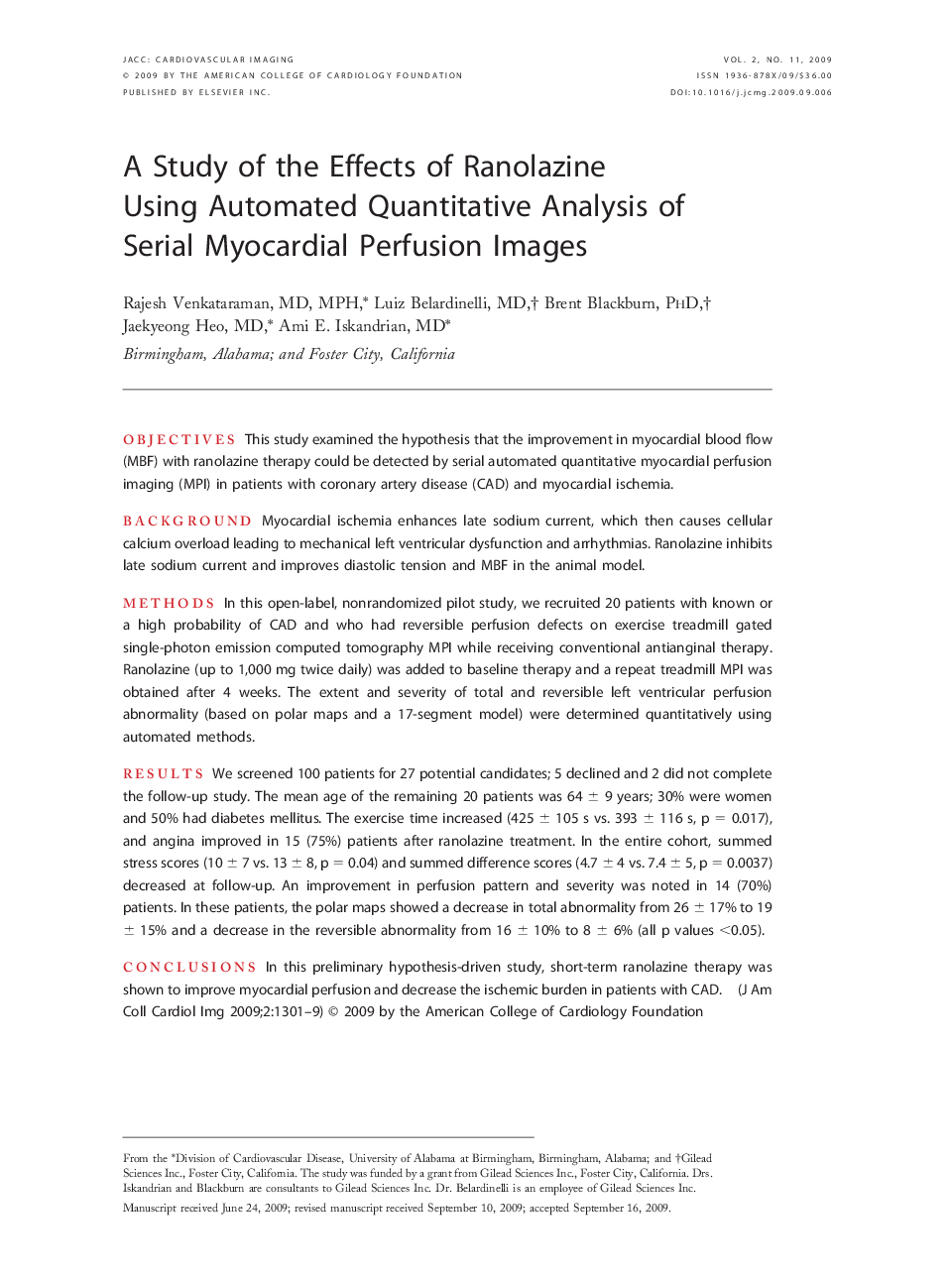| کد مقاله | کد نشریه | سال انتشار | مقاله انگلیسی | نسخه تمام متن |
|---|---|---|---|---|
| 2939076 | 1176971 | 2009 | 9 صفحه PDF | دانلود رایگان |

ObjectivesThis study examined the hypothesis that the improvement in myocardial blood flow (MBF) with ranolazine therapy could be detected by serial automated quantitative myocardial perfusion imaging (MPI) in patients with coronary artery disease (CAD) and myocardial ischemia.BackgroundMyocardial ischemia enhances late sodium current, which then causes cellular calcium overload leading to mechanical left ventricular dysfunction and arrhythmias. Ranolazine inhibits late sodium current and improves diastolic tension and MBF in the animal model.MethodsIn this open-label, nonrandomized pilot study, we recruited 20 patients with known or a high probability of CAD and who had reversible perfusion defects on exercise treadmill gated single-photon emission computed tomography MPI while receiving conventional antianginal therapy. Ranolazine (up to 1,000 mg twice daily) was added to baseline therapy and a repeat treadmill MPI was obtained after 4 weeks. The extent and severity of total and reversible left ventricular perfusion abnormality (based on polar maps and a 17-segment model) were determined quantitatively using automated methods.ResultsWe screened 100 patients for 27 potential candidates; 5 declined and 2 did not complete the follow-up study. The mean age of the remaining 20 patients was 64 ± 9 years; 30% were women and 50% had diabetes mellitus. The exercise time increased (425 ± 105 s vs. 393 ± 116 s, p = 0.017), and angina improved in 15 (75%) patients after ranolazine treatment. In the entire cohort, summed stress scores (10 ± 7 vs. 13 ± 8, p = 0.04) and summed difference scores (4.7 ± 4 vs. 7.4 ± 5, p = 0.0037) decreased at follow-up. An improvement in perfusion pattern and severity was noted in 14 (70%) patients. In these patients, the polar maps showed a decrease in total abnormality from 26 ± 17% to 19 ± 15% and a decrease in the reversible abnormality from 16 ± 10% to 8 ± 6% (all p values <0.05).ConclusionsIn this preliminary hypothesis-driven study, short-term ranolazine therapy was shown to improve myocardial perfusion and decrease the ischemic burden in patients with CAD.
Journal: JACC: Cardiovascular Imaging - Volume 2, Issue 11, November 2009, Pages 1301–1309